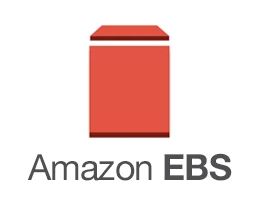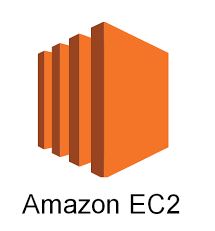1. Amazon Athena is an interactive query service to analyze data in Amazon S3 using standard SQL.
2. Athena is server less,
3. For Athena you pay only for the queries that you run.
4. Amazon Athena uses Presto with full standard SQL support.
5. Athena works with a variety of standard data formats, which includes CSV, JSON, ORC, Apache Parquet and Avro.
6. Athena is optimized for fast performance with Amazon S3.
7. Athena executes queries in parallel ( No need to anything from developer side, Athena will take care of itself) , so that you get query results in seconds, even on large datasets.
8. Athena gets you results within seconds.
9. There is no need for complex ETL jobs to prepare data for analysis.
10. Amazon Athena uses Hive only for DDL and for creation/modification and deletion of tables and/or partitions.
11. Athena is out-of-the-box integrated with AWS Glue Data Catalog.
12. The AWS Glue Data Catalog provides a unified metadata repository across a variety of data sources and data formats.
13. In Athena you point your data ( Amazon S3 location) , define the schema, and you can start querying using standard SQL.
14. Amazon Athena uses a managed Data Catalog to store information and schemas about the databases and tables.
15. Amazon Athena themselves manage or tuning clusters to get fast performance.
16. An AWS Glue crawler can automatically scan your data sources, identify data formats, and infer schema.
17. You can also use Glue’s fully-managed ETL capabilities to transform data or convert it into columnar formats to optimize cost and improve performance.
18. Athena provides one of the easiest way to run ad-hoc queries for data in S3 without the need to setup or manage any servers.
19. In Athena, you pay only for the queries that you run. You are charged based on the amount of data scanned by each query.
20. You can have savings and performance gains by compressing, partitioning, or converting your data to a columnar format, because each of those operations reduces the amount of data that Athena needs to scan to execute a query.
21. Athena can also handle complex analysis, including large joins, window functions, and arrays.
22. Athena is great if you just need to run a quick query on some web logs to troubleshoot a performance issue on your site.
23. Athena’s data catalog is Hive metastore compatible. If you’re using EMR and already have a Hive metastore, you simply execute your DDL statements on Amazon Athena, and then you can start querying your data right away without impacting your Amazon EMR jobs.
24. Federated query in Athena allows you to run SQL queries across variety of relational, non-relational, and custom data sources. You get a unified way to run SQL queries across various data stores.(A federated query is a way to send a query statement to an external database and get the result back as a temporary table.)
25. Amazon Athena supports a wide variety of data formats like CSV, TSV, JSON, or Textfiles and also supports open source columnar formats such as Apache ORC and Apache Parquet. Athena also supports compressed data in Snappy, Zlib, LZO, and GZIP formats. By compressing, partitioning, and using columnar formats you can improve performance and reduce your costs.
26. Amazon Athena supports both simple data types such as INTEGER, DOUBLE, VARCHAR and complex data types such as MAPS, ARRAY and STRUCT.
27. Athena uses Presto when you run SQL queries on Amazon S3.
28. Amazon Athena allows you to partition your data on any column. Partitions allow you to limit the amount of data each query scans, leading to cost savings and faster performance.
29. Athena queries data directly from Amazon S3 so there’s no data movement or loading required.
30. Amazon Athena integrates with Amazon QuickSight, allowing you to easily visualize your data stored in Amazon S3.
Igniting the Spark of Knowledge
Recent Posts
Featured Posts – Slider Widget
Related Posts
- Amazon CloudWatch quick reference and cheat sheet
Amazon CloudWatch 1. Amazon CloudWatch provides you with data and actionable insights to monitor your…
- Amazon Aurora quick reference and cheat sheet.
1. Aurora is an AWS proprietary database. 2. Aurora is a fully managed service. 3.…
- Amazon CloudFront quick reference and cheat sheet
1. CloudFront gives developers an easy and cost-effective way to distribute content with low latency…
- Amazon API Gateway quick reference and cheat sheet
1. Amazon API Gateway is an AWS service for creating, publishing, maintaining, monitoring, and securing…
- NumPy Cheat Sheet for Quick reference
NumPy The NumPy library is the core library for scientific computing in Python. This Python…
- Matplotlib Cheat Sheet for Quick reference
Matplotlib Matplotlib Cheat Sheet for Quick reference Matplotlib is a Python 2D plotting library which…
- Pandas Cheat Sheet for Quick reference
Syntax for Creating DataFrames Specify values for each column. a b c 1 4 7…
- Elastic Network Interfaces quick reference and cheat sheet
Elastic Network Interfaces - ENIs are virtual network cards you can attach to your EC2…
- AWS EC2 quick reference and cheat sheet
Amazon EC2 is the virtual server instances on the AWS cloud. Amazon EC2 provides varying…
- Amazon Elastic Block Store quick reference and cheat sheet
Amazon Elastic Block Store 1. Amazon EBS is Amazon Elastic Block Store. 2. EBS volumes…
Most Viewed Posts
- dbt (data build tool) interview questions
- Python throwing as NameError: name ‘__file__’ is not defined – Solution
- DBT command not found after intalling DBT-How to resolve.
- BigQuery : Handle missing or null values in BigQuery
- Airflow dags not getting refreshed/updating. How to do it manually?
- How to delete a partition data as well from Hive external table on DROP command?
- PySpark – groupby with aggregation (count, sum, mean, min, max)
Copyright © 2024 Freshers.in










